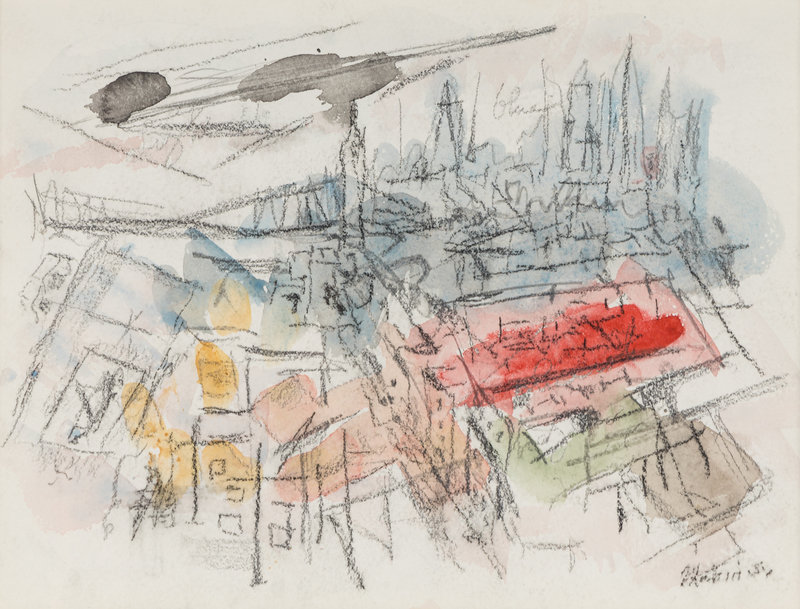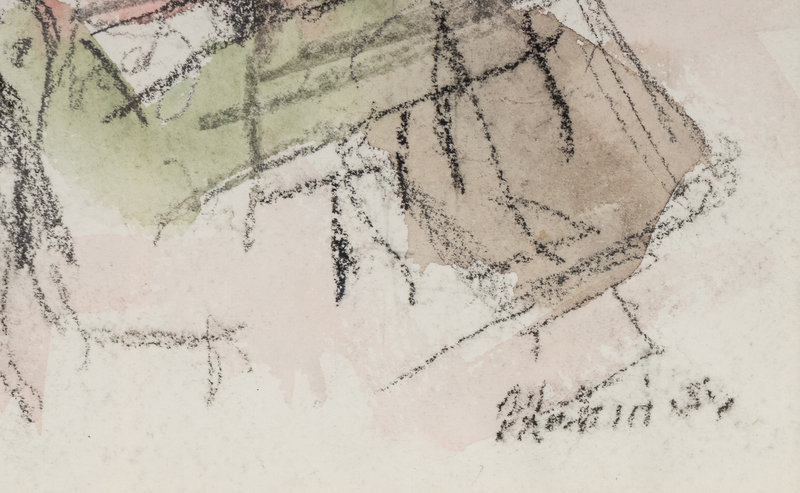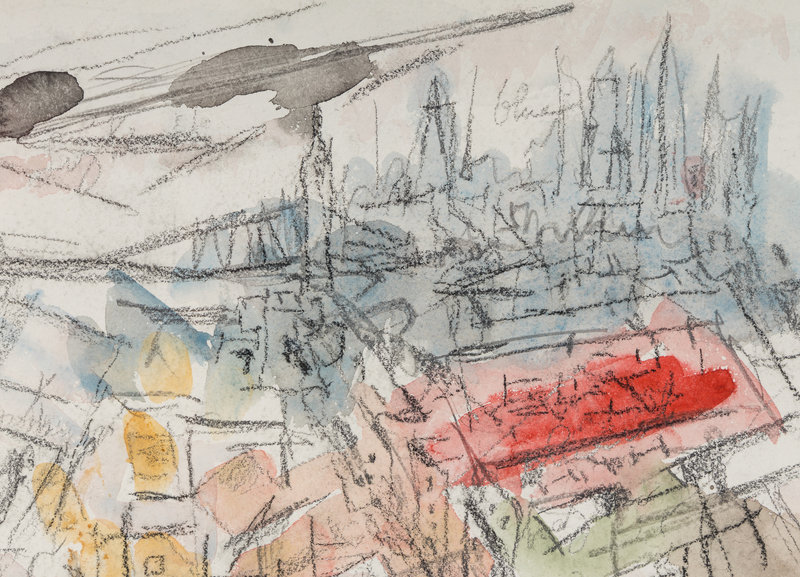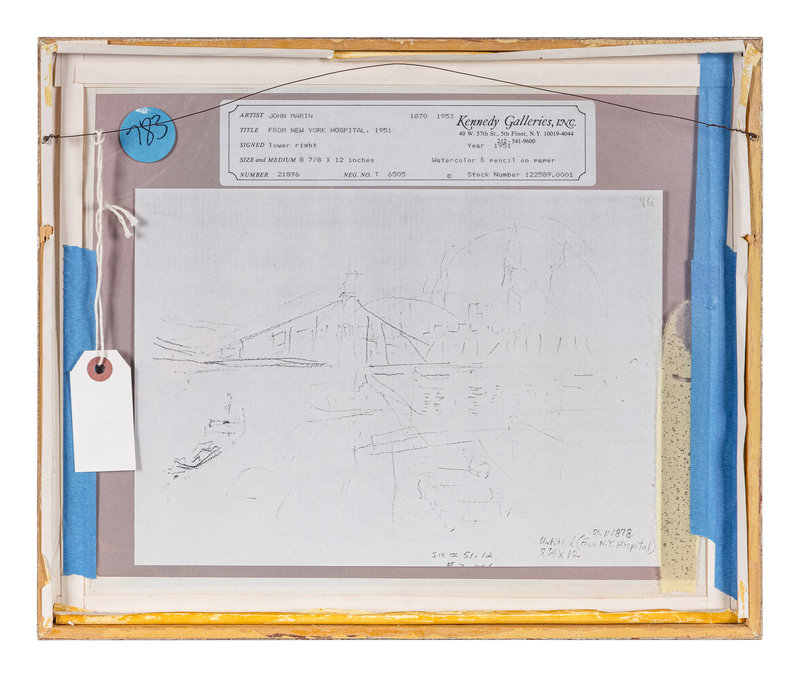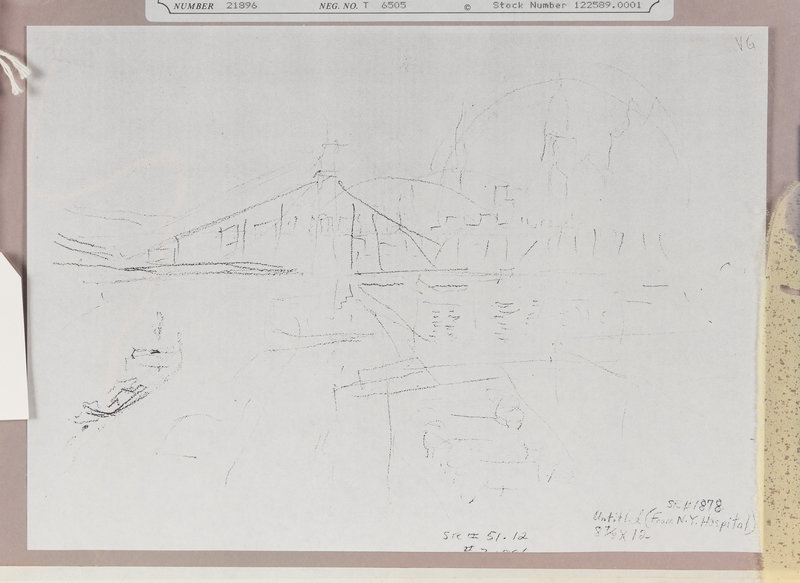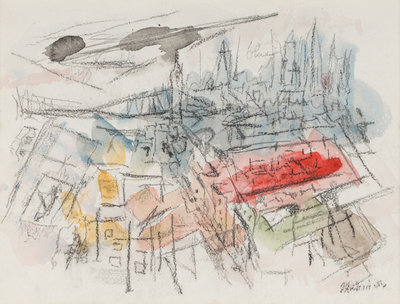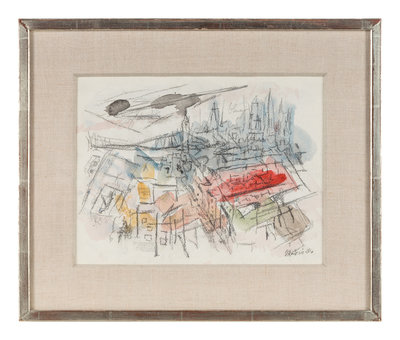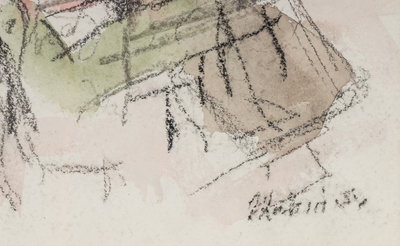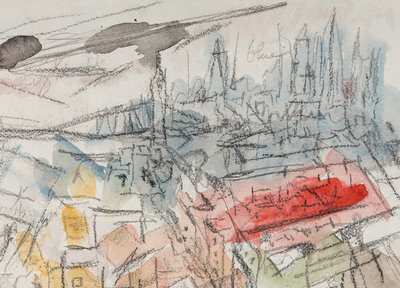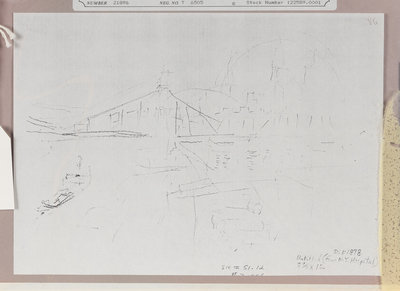Provenance:
Estate of the Artist
Kennedy Galleries, New York (label on the reverse)
Literature:
Sheldon Reich, John Marin: A Stylistic Analysis and Catalogue Raisonné, vol. II, Tucson, 1970, no. 51.12, p. 792, illus.
Lot note:
The two present watercolors, West Point Maine, 1914 (Lot 1043) and From New York Hospital, 1951 (Lot 1044), represent the major facets of John Marin’s oeuvre, that of his views of Manhattan skyscrapers and the coastal landscape of Maine. Despite the differing subject matter, the artist equally captured the dynamism of the urban scene and the restless energy of the sea in the spontaneous style he developed using watercolors. Through his sensitivity to mass, form, color, and line and their dynamic interchanges, Marin provided a precedent for the Abstract Expressionist movement of the late 1950s.
Born in Rutherford, New Jersey, Marin did not come to art directly, but instead first studied mechanical drawing and mathematics at the Steven Institute of Technology, and then worked as a draftsman for several architects. At the age of 29, he enrolled at the Pennsylvania Academy of the Fine Arts in Philadelphia from 1899 to 1901, and at the Art Students League in New York from 1901 to 1903. Like many young artists of the time, Marin left for Europe in 1905, where he was to remain for five years. In Paris, he supported himself selling tourist etchings of French landmarks, while experimenting with watercolors after discovering the work of James McNeill Whistler, Paul Cezanne, and Henri Matisse. A turning point came when he met the photographer Edward Steichen in Paris, in the summer of 1909. Steichen introduced Marin to American photographer and art dealer Alfred Stieglitz, which led to his first important exhibition at Stieglitz’s New York gallery, 291, in 1910. Stieglitz became Marin’s friend and champion, exhibiting his work more often than any other artist, other than Georgia O’Keeffe.
By 1911, Marin was based in New York and divided the next twenty years between New York, Vermont, and New England. He made his first of what would become annual trips to Maine in 1914. The artist was fascinated by the natural and untouched beauty of the Maine seacoast and landscape, which would provide creative fodder for the rest of his career. It was during this first trip to Maine that West Point, Maine, was executed. Here, the avant-garde ideas he absorbed in Europe, particularly the art of Cézanne and Matisse, are seen at play, yet are melded with the artist’s personal style using luminescent colors and agile brushwork. Horizontal washes of pinkish-yellows and translucent blues billow across the sky. Stronger diagonal strokes of ocher, violet, and turquoise describe the crashing waves and a barely seen shore. The fluid watercolors represent the flux and collision of the natural elements, while the reinforcement of the picture plane reveals Marin’s effort to impose order and structure on the landscape. Through these contrasts, the artist conveys the “great forces at work,” of nature.
The same restless and relentless energy that Marin sought to capture of the natural world is seen in his views of New York. The artist used fragmented lines, a delicate touch, and cadenced compositions to express the “pull forces” of forceful, sometimes, chaotic, urban scenes. From New York Hospital, 1951, is a late work, produced while Marin was lying sick in New York Hospital. The buildings viewed from his window are expressed with excited bursts of pencil lines that crisscross the sheet and converge on one of the many bridges of Manhattan. Punctuating the sky are skyscraper spires and bold horizontal lines depicting clouds, which uplift the structures and streets below. The soaring high-rises in the upper right corner are painted with a translucent blue wash, with the lower half of the composition painted in warmer red and blue washes, further contrasted with green in the lower right corner. The rhythmic push pull of lines and colors reveal Marin’s aim to capture the tensions or opposing weights that he felt existed all around him: “There will be all sorts of movement and rhythm beats, one-two-three, two-two-three, three-one-one, all sorts, all seen and expressed in color weights.” In both West Point, Maine and From New York Hospital, Marin achieves a translation of motion on paper that represents the artist’s brilliance and impact at its best.
